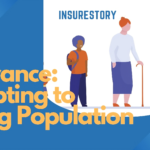🔥 What happens when your home becomes ‘uninsurable’?
Imagine waking up to a letter from your insurer: “We’re no longer covering properties in your area.” No warning, no alternative, just an abrupt exit. This is the harsh reality homeowners in California, Florida, and other high-risk zones are facing as climate change reshapes the insurance industry.
🌪️ Insurers Are Retreating from Disaster-Prone Regions
2024 marked a new tipping point: global insured losses from natural disasters surpassed $100 billion. But unlike in the past, these weren’t caused by a single catastrophic event—it was the relentless wave of smaller, widespread disasters.
📌 Wildfires in California have made home insurance nearly impossible to find. 📌 Hurricanes in Florida have driven insurers like State Farm and Allstate to pull out. 📌 Flooding on the East Coast is devaluing coastal homes as risk models predict a bleak future.
With fewer insurers willing to cover these high-risk areas, homeowners are left with three bad options: ✔️ State-backed ‘last resort’ plans (often expensive and limited in coverage) ✔️ Self-insurance (a massive financial risk) ✔️ Leaving their homes behind
📈 The Cost of Insurance is Skyrocketing
Natural catastrophe losses now average $151 billion annually and are projected to grow by 7.2% every year. Insurers, struggling to keep up, have responded with:
🚨 Higher premiums—Some homeowners have seen rates double or even triple. 🚨 Stricter policy terms—Roof coverage, wildfire exclusions, and storm deductibles are now common. 🚨 Withdrawal from high-risk zones—For many, insurance isn’t just expensive—it’s unavailable.
💡 Can AI & New Risk Models Save the Industry?
Insurers are turning to AI-driven climate risk models to make better predictions. But the future isn’t reassuring:
🌊 McKinsey warns that tidal flooding could devalue coastal homes by 15–35% by 2050. ⚡ Only 35% of 2023’s $357 billion in disaster losses were insured. 🌍 Emerging markets in Asia and Africa face the biggest protection gaps.
⚖️ The Big Question: Can Insurance Keep Up?
While parametric insurance (where payouts are triggered by wind speeds or earthquake magnitudes) is gaining traction, the fundamental issue remains—is traditional insurance even viable in a world where disasters are the norm?
If insurers continue retreating, who will bear the financial burden of climate change?











